33 Types of Trees in Hawaii (With Pictures)
-
Rachael Gerkensmeyer
- Last updated:
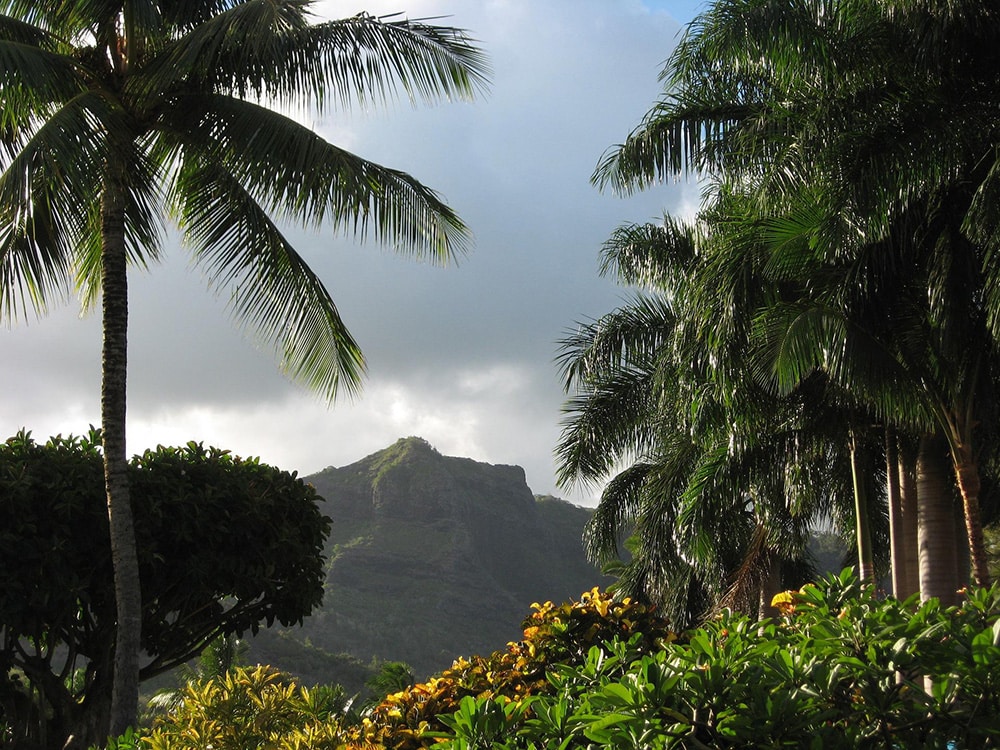
The first things that most people think of when Hawaii comes to mind are sea, sand, and sunshine. However, while wandering the islands, it’s hard not to notice the abundance of different trees growing throughout the state. You won’t just see palm trees in Hawaii — there are many different types of trees growing in the Aloha State. Here are 33 types of trees that you’re likely to come across while spending time in the Hawaiian sun.
The 33 Types of Trees in Hawaii
1. Macadamia Nut Trees

| USDA Hardiness Region: | 9–11 |
| Sun: | Full |
| Placement: | Large yards, farms |
Hawaii was the first place to establish commercial macadamia nut farms in the world, so it should be no surprise to see mac nut trees growing around the state today. In fact, there are working macadamia nut farms in the Ka’u district on the Big Island. Mac nuts don’t get picked directly off the tree. When the nuts are ripe, they fall off the tree, where they are then scooped up for processing.
2. Almond Trees

| USDA Hardiness Region: | 5–9 |
| Sun: | Full sun |
| Placement: | Large yards, farms |
Almond trees are also grown in Hawaii, although not to the extent that macadamia nut trees are. These trees can grow in sandy locations, so they used to grow near the ocean. However, most have been removed and replaced with palm trees or nothing at all. Today, people grow almond trees in their large yards, and the trees can be found growing on trails and in other random locations throughout the state.
3. Sausage Trees

| USDA Hardiness Region: | 10b |
| Sun: | Full sun |
| Placement: | Large open spaces |
Native to Africa, the sausage tree is a popular exotic option for property owners and commercial landscapers alike. Once fully grown, these trees stand at about 30 feet in height, and they grow red flowers with large seedpods that look like sausage links. The seedpods are heavy and large, so they weigh down the tree branches as they hang.
4. Kukui Nut Trees
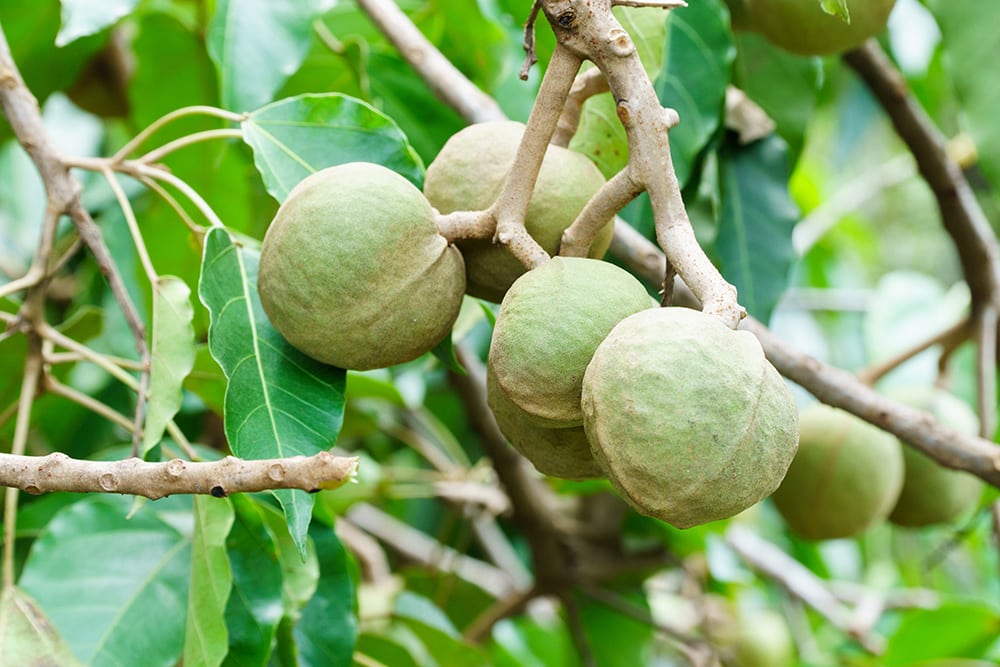
| USDA Hardiness Region: | 10–12 |
| Sun: | Full sun/partial sun |
| Placement: | Medium to large yards |
The kukui nut tree was named the official Hawaii state tree in 1959 and has since become popular among residents and tourists alike. The Polynesians brought the first kukui nut trees to Hawaii, where they used the trees as a fuel source. Kukui nut trees are used for things like making tattoo ink and creating poultices for headaches.
5. Cordia Trees
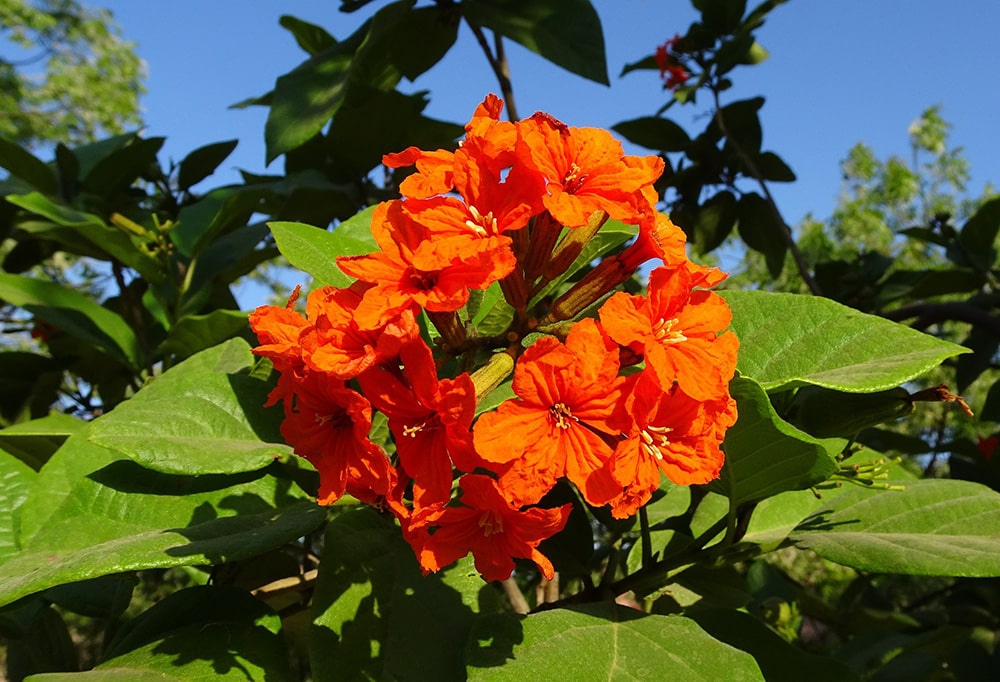
| USDA Hardiness Region: | 10b–11 |
| Sun: | Full sun/partial sun |
| Placement: | Medium to large yards |
Cordia trees were once thought to be imported into Hawaii from Polynesia, but a fossil site in Kaua’i proved that they are actually indigenous to the state. Native Hawaiians used these trees to fashion dishes and utensils for themselves because the wood held up to the elements so well. Aged cardia leaves can be used to make a reddish brownish dye.
6. Banyan Trees
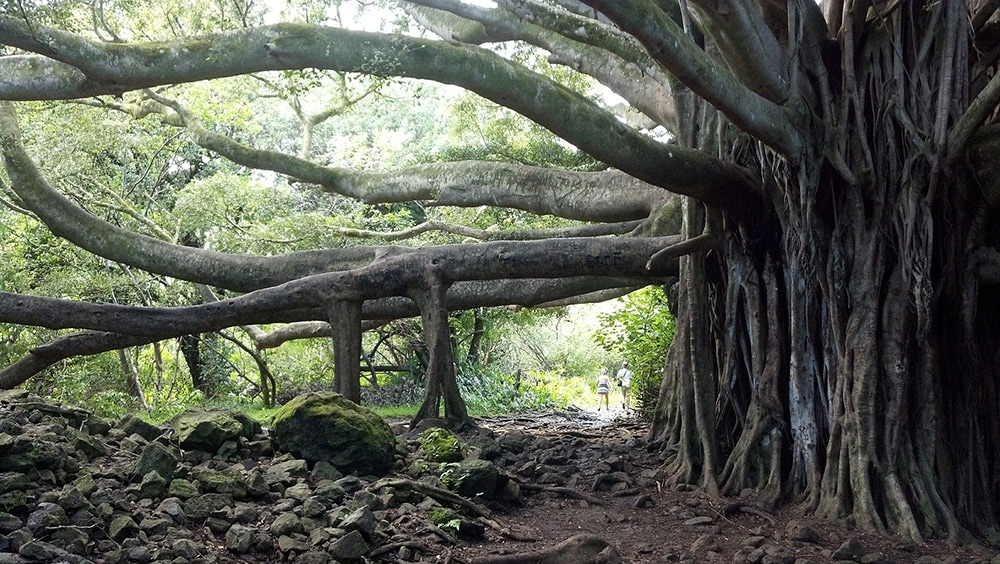
| USDA Hardiness Region: | 10–12 |
| Sun: | Bright filtered shade |
| Placement: | Large yards, open spaces |
Banyan trees are prized for their full bodies and ability to create huge canopies of shade and rain protection underneath their branches. Some trees grow as tall as 40 feet in height and have canopies that span more than a quarter mile in circumference. Many can be found growing in Hilo, Hawaii, in and around Liliuokalani Park and Gardens.
7. Banana Trees
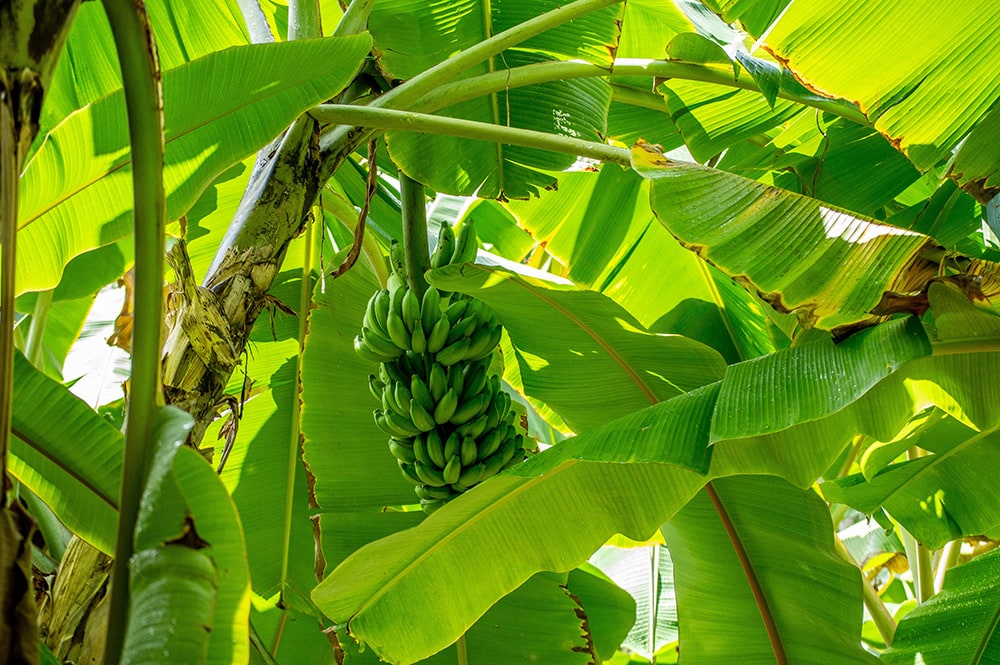
| USDA Hardiness Region: | 9a–10b |
| Sun: | Full sun |
| Placement: | Any sized yard or open space |
It is hard to imagine Hawaii without banana trees. Luckily, we don’t have to, as there are plenty of them on farms and around commercial spaces. More than 70 varieties of banana trees are grown in Hawaii, most of which provide a sustainable source of food for locals to eat and sell to tourists.
8. Breadfruit (‘Ulu) Trees
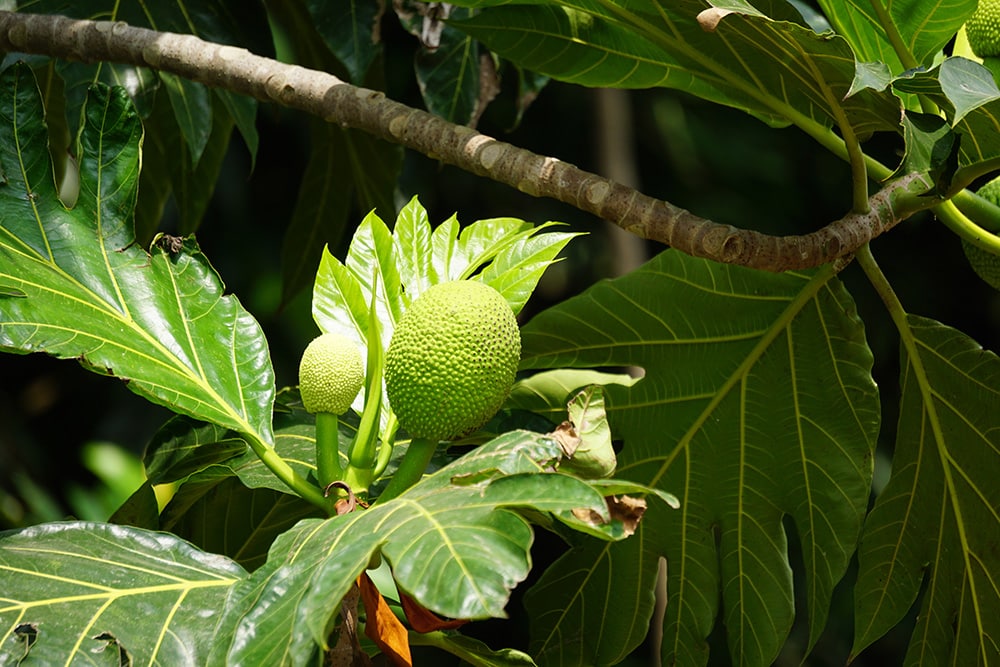
| USDA Hardiness Region: | 9b–11 |
| Sun: | Full sun |
| Placement: | Large outdoor spaces |
More commonly known as ‘Ulu trees by residents of Hawaii, breadfruit trees can grow to about 80 feet in height. They produce large fruits that are high in carbohydrates, so they are popularly used in traditional Hawaiian dishes. The average breadfruit tree can produce upward of 200 fruits each season.
9. Camphor Trees
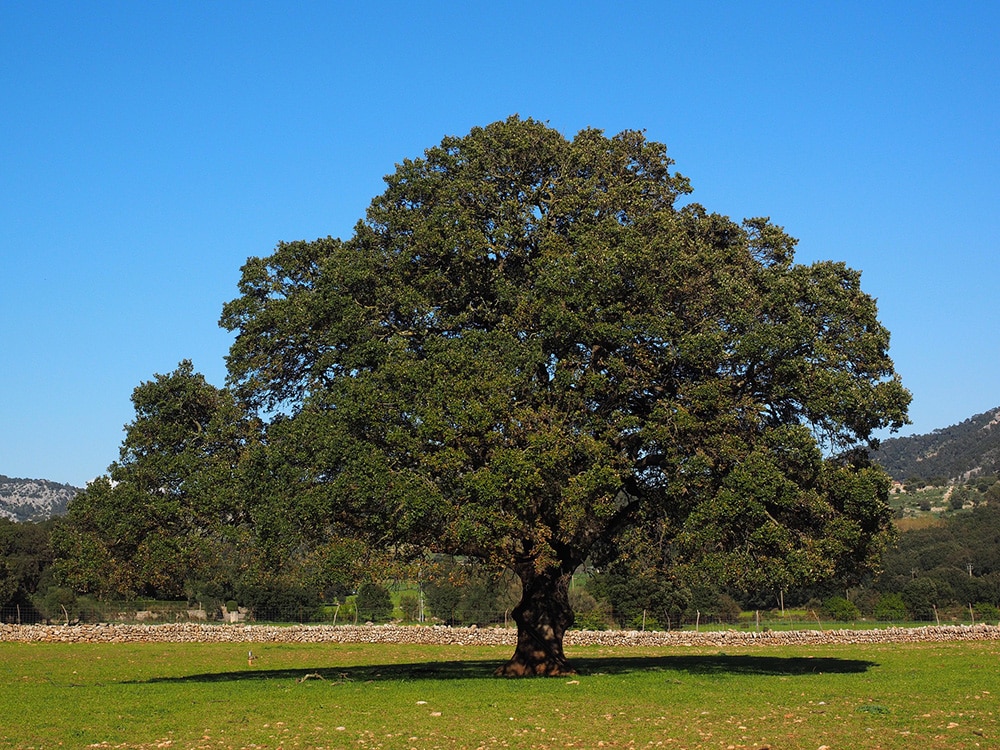
| USDA Hardiness Region: | 9–11 |
| Sun: | Full sun |
| Placement: | Large yards and properties |
Camphor trees are used as ornamental elements in landscape designs throughout the state of Hawaii. These trees produce large, rounded crowns of leaves that are dark green in color. Their trunks can be as round as 3 feet in diameter and can grow as tall as 80 feet in height. They can grow in a variety of different soil types.
10. Hala Trees
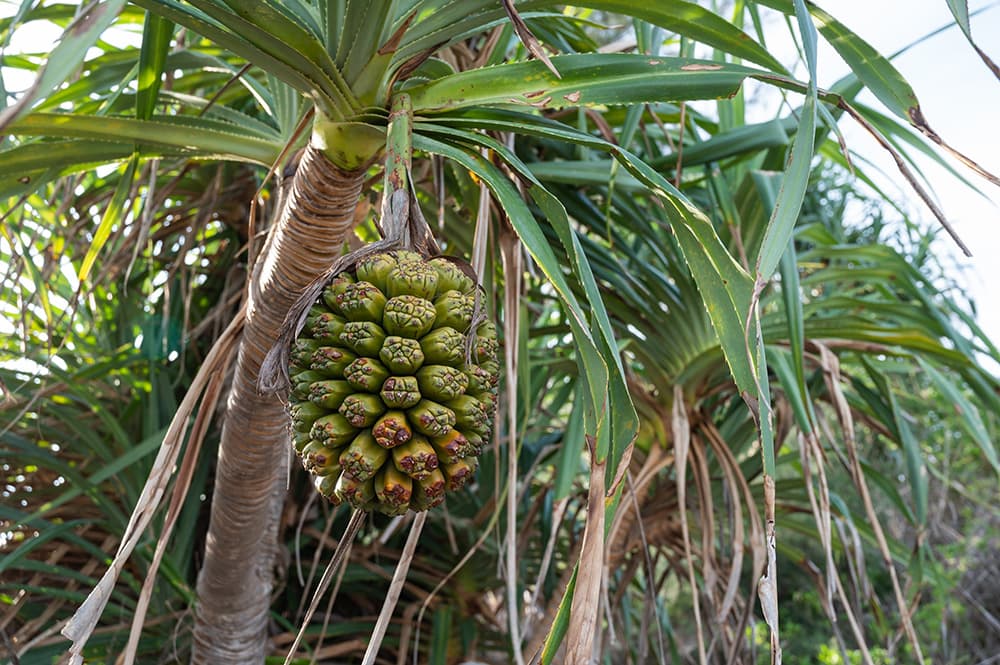
| USDA Hardiness Region: | 11 |
| Sun: | Full sun |
| Placement: | Small, medium, large yards |
This is an indigenous tree of Hawaii that all residents and visitors should be aware of. They can be grown as shrubs around the house or left to turn into medium-sized trees somewhere in the yard. Their long, slender leaves hang toward the ground, and the edges feel sharp when ran across the hand.
11. Sea Grape Trees
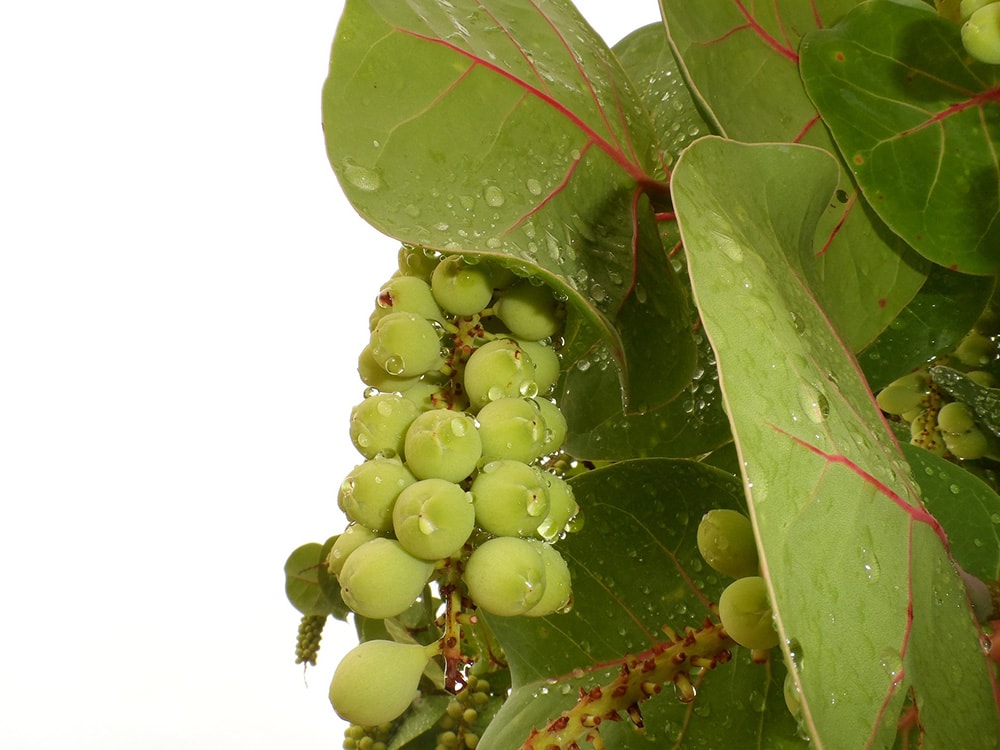
| USDA Hardiness Region: | 10a–11 |
| Sun: | Full sun |
| Placement: | Most open outdoor spaces |
These sea-tolerant trees grow well in coastal areas, even where the land is rocky and little soil is found. They have short, thin trunks and grow large, flat leaves that feel leathery to the touch. They also grow edible fruits, called sea grapes, that are sweet yet tart at the same time. Many people use the fruit to create homemade wine and jelly.
12. Coconut Trees
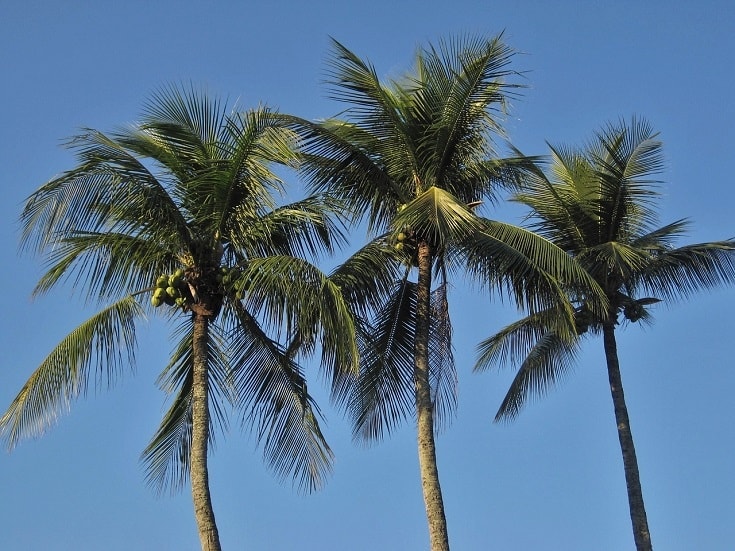
| USDA Hardiness Region: | 10+ |
| Sun: | Full sun |
| Placement: | Porches, backyards, farms |
The coconut trees found growing in Hawaii come from a family of trees that were developed in Southeast Asia. The trees were transported to Hawaii when the islands were discovered by Polynesians. Coconut trees grow everywhere in Hawaii, especially near sea level. Coconuts grow on the trees in clumps and will fall to the ground when fully ripe.
13. ‘Iliahi a Lo’e (Sandalwood) Trees

| USDA Hardiness Region: | 10–11 |
| Sun: | Full sun/partial sun |
| Placement: | Large outdoor spaces |
‘Iliahi a Lo’e is the Hawaiian translation of the sandalwood tree. They look more like bushy shrubs than they do trees and have large, oval-shaped leaves that cluster around groups of small cream-colored flowers. The wood of the tree retains the sweet sandalwood scent of the tree for weeks, if not months.
14. Rainbow Eucalyptus Trees
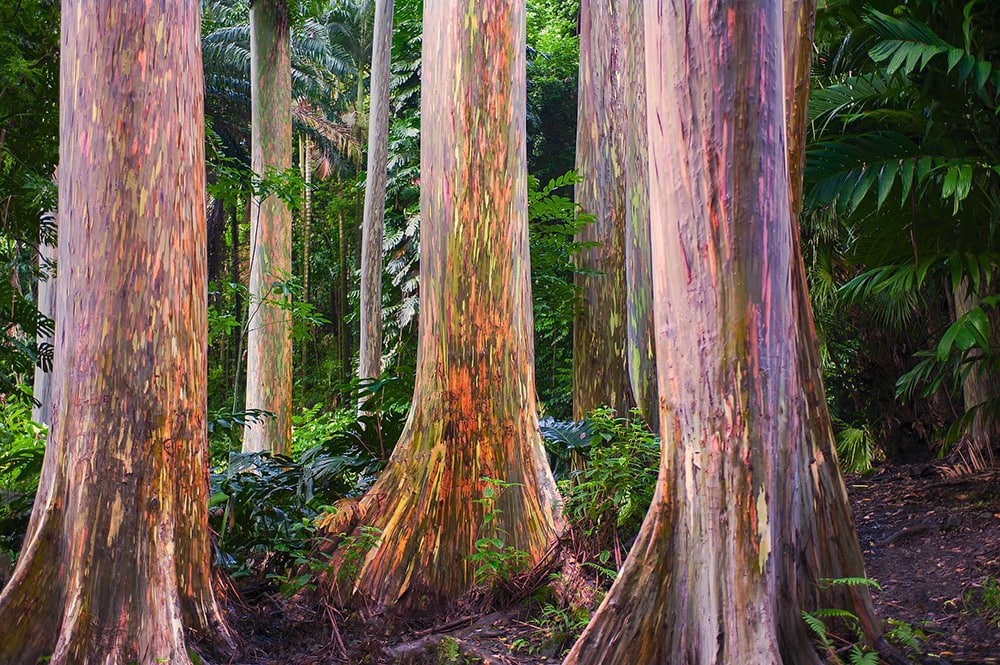
| USDA Hardiness Region: | 8–11 |
| Sun: | Full sun |
| Placement: | Large outdoor spaces |
One of the most popular ornamental trees among Hawaiian residents is the rainbow eucalyptus. The trunks on rainbow eucalyptus trees are multicolored and look as if someone took a paintbrush to them. Some trees have bright-orange, green, and purple colors, while others have muted reds and yellows.
15. Koa Trees
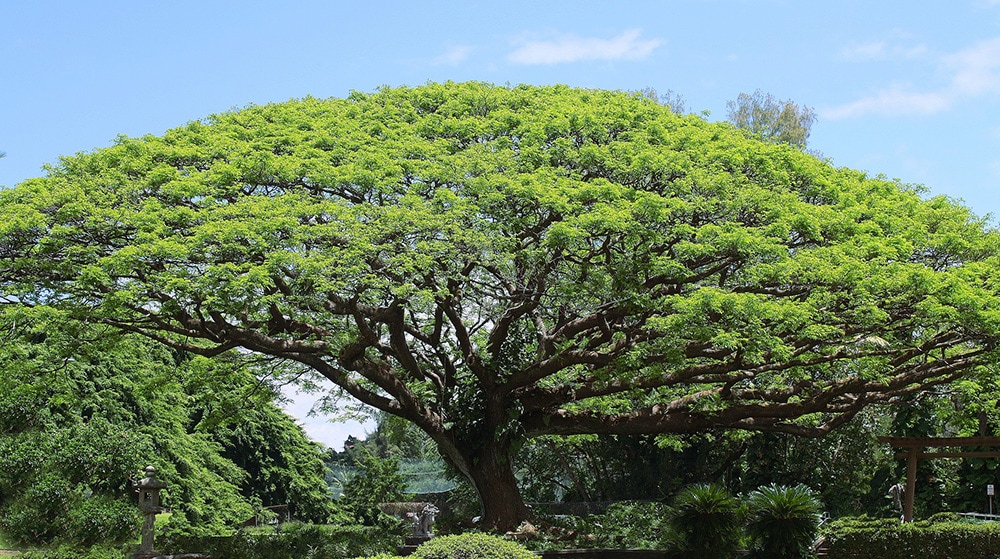
| USDA Hardiness Region: | 10–11 |
| Sun: | Full sun |
| Placement: | Large outdoor spaces |
As the largest native tree growing in Hawaii, the Koa tree can withstand harsh conditions including sea salt, harsh winds, strong rains, and even hurricane weather. These trees grow tall and wide, making them excellent for shade protection in parks and near beaches. Koa trees are grown and farmed for their wood to create prized pieces of furniture and artwork.
16. Nepal Alder Trees
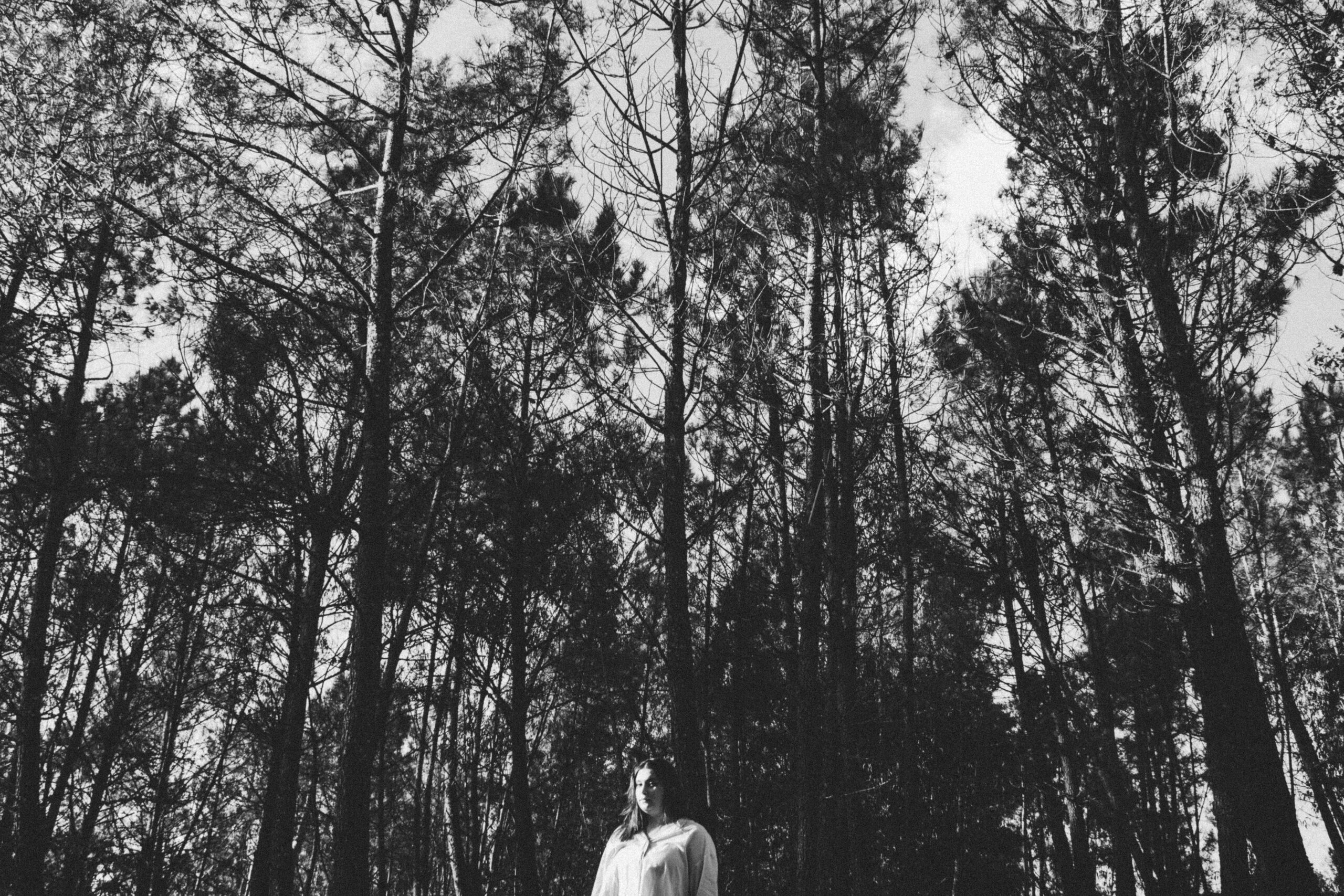
| USDA Hardiness Region: | 8–11 |
| Sun: | Full sun/partial sun |
| Placement: | 900–2,700 elevation |
These deciduous trees are not commonly found near the sea in Hawaii, but they are abundant in forests and in the mountainous areas between 900 and 2,700 elevation. These are fast-growing trees that can reach as tall as 70 feet when fully grown. They tend to flower between September and August, and they prefer living in heavy, clay-like soil.
17. Golden Shower Trees
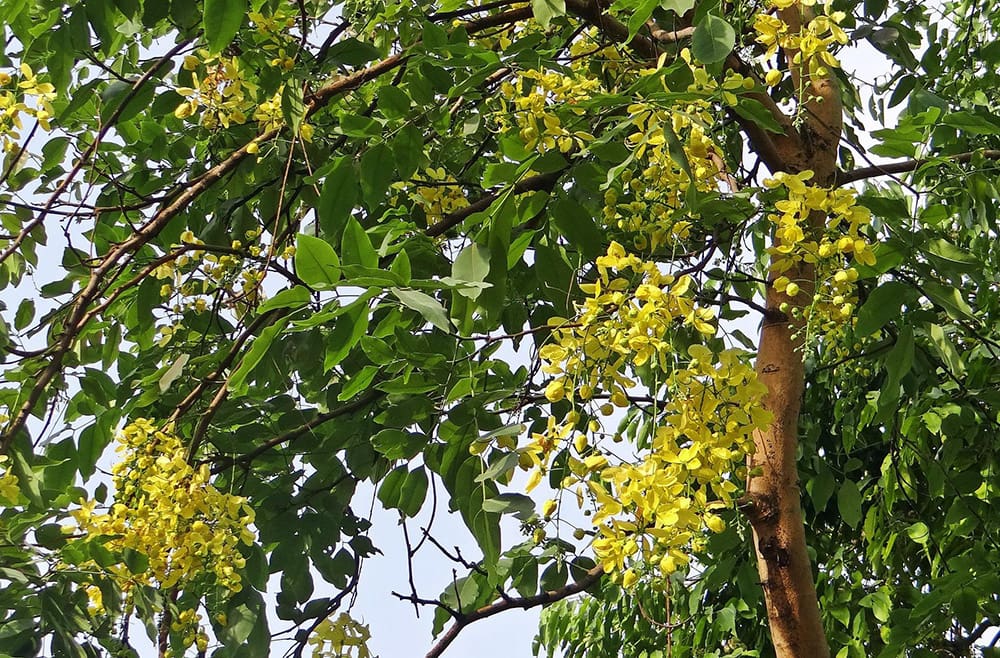
| USDA Hardiness Region: | 10 |
| Sun: | Full sun |
| Placement: | Anywhere outdoors |
These fast-growing trees bloom beautiful yellow flowers that hang down from their branches. This gives the trees the look of releasing “golden showers,” hence how they got their name. Golden shower trees are fun to look at, but their seeds are poisonous, so it’s a good idea to stay away from them.
18. Fire Trees
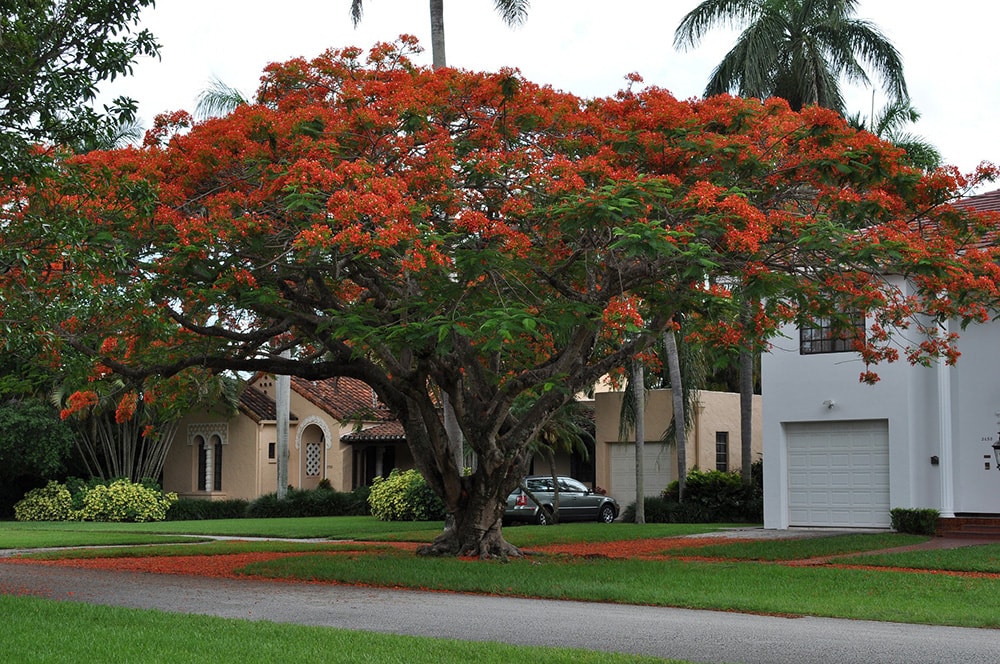
| USDA Hardiness Region: | 9–10 |
| Sun: | Full sun/partial shade |
| Placement: | Anywhere |
This is a small evergreen tree that is considered an invasive species in the state of Hawaii. Fire trees grow small pink or red fruits, but these are not edible for humans. They tend to push indigenous plants and trees out, which can upset Hawaii’s unique ecosystem by decreasing nitrogen levels.
19. Mangrove Trees
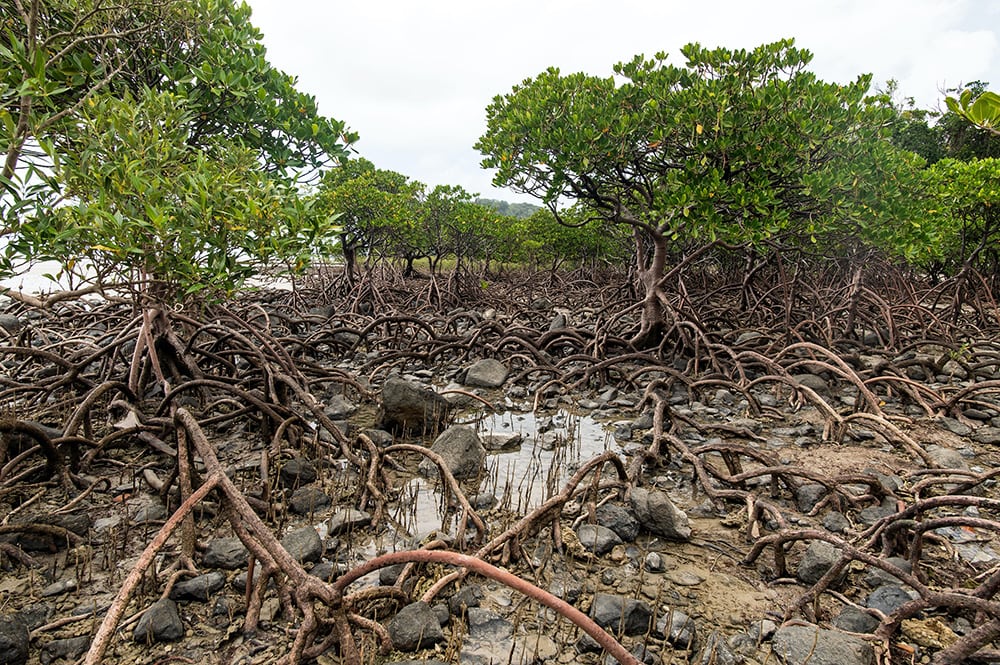
| USDA Hardiness Region: | 9–12 |
| Sun: | Full sun |
| Placement: | Expansive outdoor spaces |
First introduced to the island of Molokai in 1902, the mangrove tree can now be found growing on all the major islands of the Hawaiian chain. There are at least five different species of mangroves growing in Hawaii, all of which do a great job of stabilizing coastal mud flats. They are most commonly found growing right near the ocean and sometimes even under sea level.
20. ‘Ohe Bamboo Trees

| USDA Hardiness Region: | 10a–10b |
| Sun: | Full sun |
| Placement: | Small yards, patios, commercial properties |
The ‘ohe, or Hawaiian bamboo, tree is called as such because it grows wild throughout the islands. However, no bamboo is native to Hawaii, even though it’s been growing there for hundreds of years. Bamboo is grown in many private yards, throughout outdoor commercial venues, and in hotel landscapes.
21. Jacaranda Trees

| USDA Hardiness Region: | 10–11 |
| Sun: | Full sun |
| Placement: | Yards, farms, commercial spaces |
These gorgeous trees were introduced to Hawaii sometime in the 1900s and have become extremely popular among property owners throughout the state. They grow large branches that wind out in different directions and grow amazing purple flowers during spring when they are in full bloom.
22. Arizona Cypress Trees

| USDA Hardiness Region: | 7–9 |
| Sun: | Full sun |
| Placement: | Yards, Christmas tree farms, open spaces |
The Arizona cypress is grown in various parts of Hawaii, especially on the Big Island, for use as Christmas trees. Some farms allow residents to choose and cut down their own trees, while others supply their trees to retailers. Some people enjoy growing these trees in their yards, especially at higher elevations, where they are most likely to thrive.
23. Noni Trees
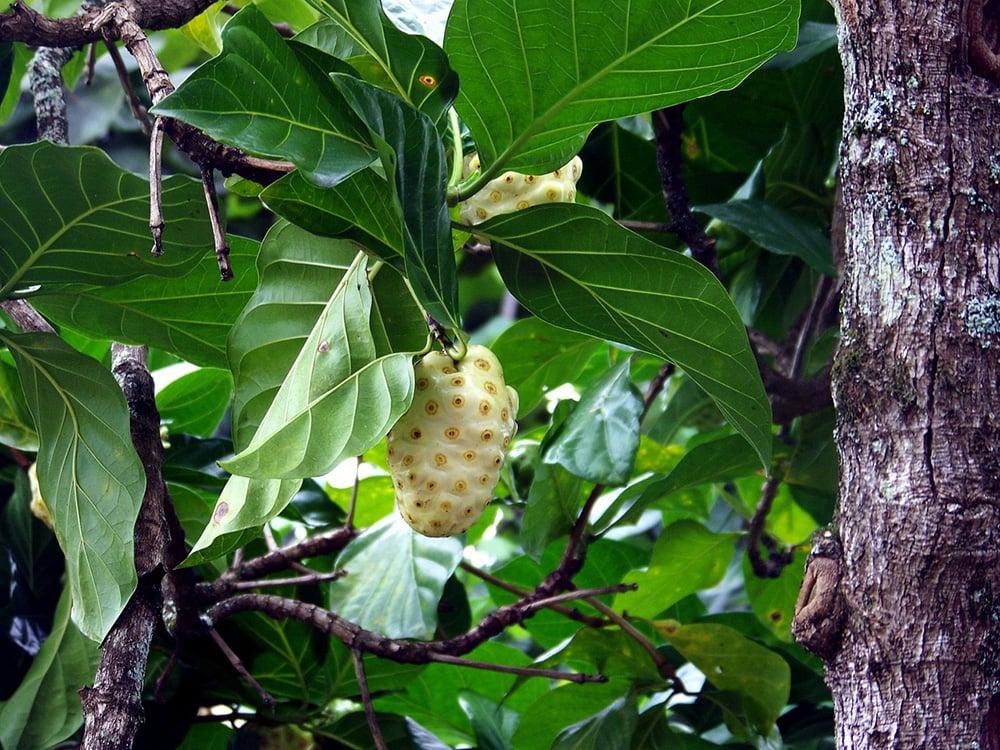
| USDA Hardiness Region: | 10 |
| Sun: | Partial sun |
| Placement: | Small and large yards, in the wild |
Noni trees are part of the coffee family. They can be cultivated to grow like shrubs, but left alone, they can grow to be up to 30 feet in height. They have been cherished by Hawaiians for hundreds of years due to the healing abilities of the noni fruits that grow on them. The fruits are thought to help fight systemic inflammation and DNA damage caused by tobacco use and have historically been used to treat various ailments.
24. Parana Pine Trees

| USDA Hardiness Region: | 7–9 |
| Sun: | Full sun/partial sun |
| Placement: | Medium to large properties |
This massive tree can grow to be 100 feet tall, so plenty of room is needed to grow them in the yard. They don’t do well in coastal regions, which means you likely won’t see a Parana pine tree unless you’re spending time at higher elevations, such as hiking on trails or camping in the mountains of Maui or the Big Island.
25. Papaya Trees

| USDA Hardiness Region: | 9–10 |
| Sun: | Full sun |
| Placement: | Small yards, farms, commercial spaces |
Papaya trees have hollow trunks and don’t live long. However, they produce plenty of juicy sweet fruit during their short lives, which can be harvested multiple times a year when grown near sea levels. The trees also grow pretty cream-colored flowers while in full bloom and can be grown in the ground or in pots, depending on the environment.
26. Silk Trees

| USDA Hardiness Region: | 6–9 |
| Sun: | Full sun/partial sun |
| Placement: | Small yards and patios |
Commonly referred to as the Albizia in Hawaii, the silk tree is considered invasive, and most residents do all that they can to eradicate it from their properties. These trees propagate quickly and easily, and their branches are brittle, which makes them dangerous to structures, people, and animals. They can also quickly alter the ecosystem and destroy nutrients in the soil.
27. Royal Poinciana Trees
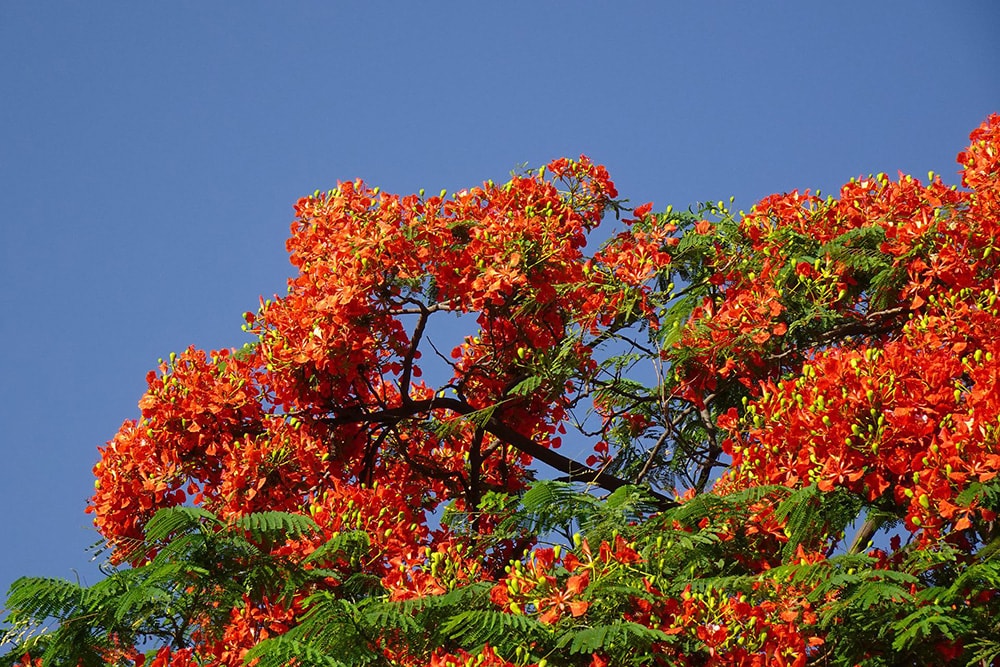
| USDA Hardiness Region: | 10–11 |
| Sun: | Full sun |
| Placement: | Open outdoor spaces |
Native to Madagascar, the Royal Poinciana tree is an ornamental perennial that blooms bright orange or yellow flowers throughout the spring months. The flowers grow in clusters above the leaves, so they are extremely easy to see even 50 feet in the air. While typically included in landscape designs, they have become naturalized at low elevations.
28. Mango Trees

| USDA Hardiness Region: | 10–11 |
| Sun: | Full sun |
| Placement: | Large yards, open spaces |
Mango trees are huge, vibrant, and shade-providing. They also happen to grow one of Hawaii’s most prized fruits: the mango. These trees can be found growing along roadways and “highways” (no island but Oahu has a highway like what you’d find on the mainland) on the Big Island, Maui, and Molokai. The fruits simply fall to the ground on the side of the road when they become ripe. Residents love to spend days traveling the roads and picking up free mangoes to take home and feed their families.
29. Monkeypod Trees

| USDA Hardiness Region: | 9–10 |
| Sun: | Full sun |
| Placement: | Large yards, open spaces |
Most places call these rain trees, but they are more commonly known as monkeypod trees in Hawaii. They grow thick canopies of leaves on strong branches that are attached to short robust trunks. These trees are popularly grown in public parks, where residents and visitors alike can enjoy lounging under them while a live band plays in the background.
30. Darwin Black Wattle Trees
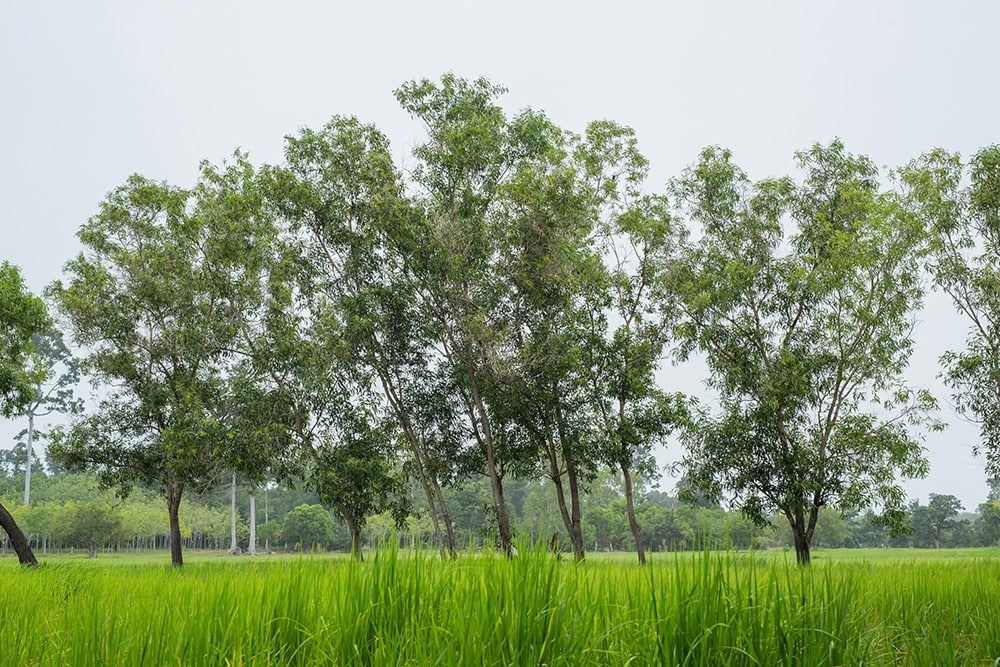
| USDA Hardiness Region: | 9–10 |
| Sun: | Full sun/partial sun |
| Placement: | Higher elevations, outdoors |
This is an invasive species of tree that can be found growing in unpopulated areas of Hawaii, particularly at higher elevations. These trees compete with indigenous growth and reduce diversity. They also happen to hog all the water resources that they can find, choking out other trees and vegetation.
31. Queensland Maple Trees

| USDA Hardiness Region: | 4–9 |
| Sun: | Full sun |
| Placement: | Large outdoor spaces |
The Queensland maple tree can be found in a few places in Hawaii, specifically in the Waiakea Forest, which is located on the east side of Hawaii Island (Big Island). They were first introduced to Hawaii in 1935 and are utilized for many things, such as producing veneer, planking boats, and making cabinets.
32. Navel Trees
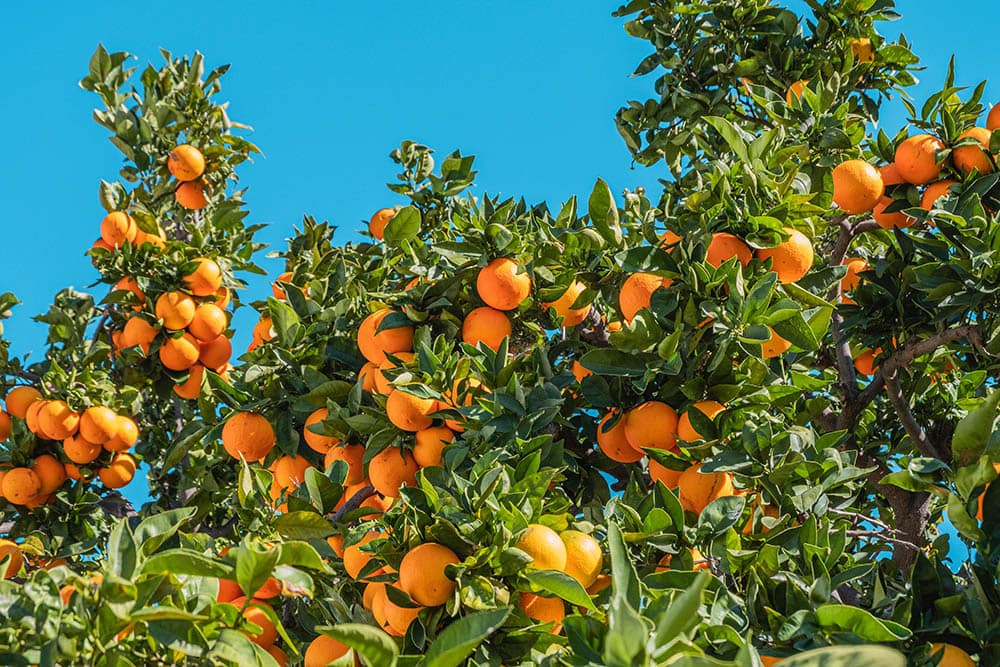
| USDA Hardiness Region: | 8b–10 |
| Sun: | Full sun |
| Placement: | Any sized yard, farms, orchards |
While navel trees can be found growing in yards all over the state of Hawaii, the Big Island is home to many navel orange farms because the rich volcanic soil results in extremely sweet and juicy fruits. Navel orange trees can be grown in yards of all sizes, as the trees can be kept small or let to grow large. Either way, the trees will produce fruit. Some people even grow navel trees in big pots on their patios.
33. Ohi’a Lehua Trees
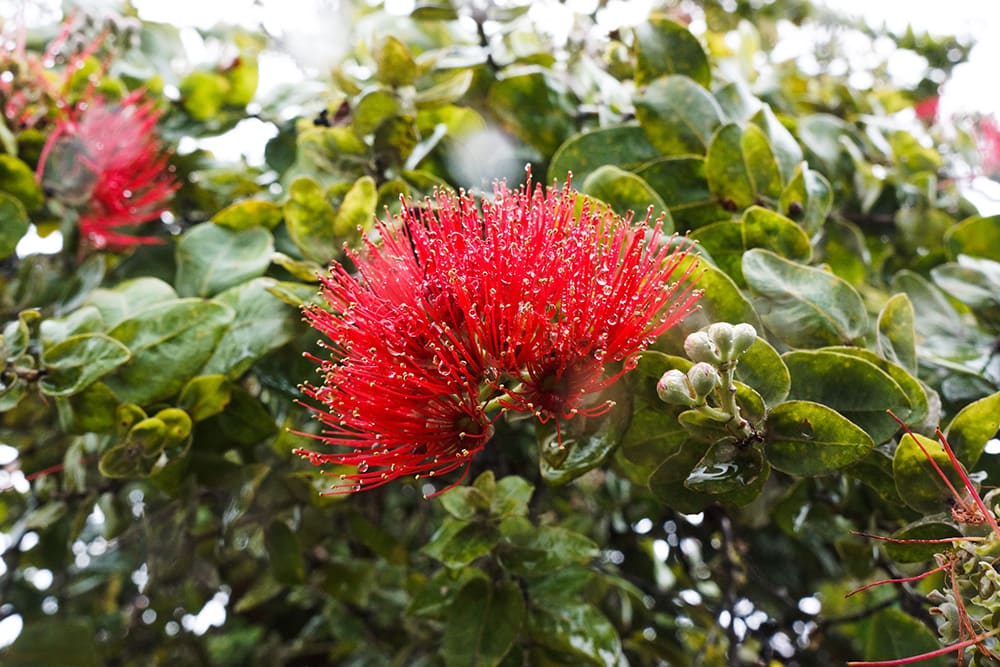
| USDA Hardiness Region: | 10a–11a |
| Sun: | Full sun |
| Placement: | Forests and mountainous regions |
The Ohi’a Lehua tree is endemic to the state of Hawaii and dominates much of the forest areas. These trees grow near sea level and in mountainous ranges. They have gorgeous red or yellow flowers (the yellow ones are rare) that look like puff balls. The wood that this tree produces was traditionally used by Hawaiians to create boards for pounding poi and to beat clothes clean.
Final Thoughts
With so many different types of trees growing throughout the state, you can expect that no landscape will be the same wherever you go. Each part of Hawaii is unique, and each island may have more of one type of tree than another. One thing is for sure: There is no shortage of tree shade to take cover under, whether at the beach, on a trail, or in a crowded town.
Featured Image Credit: mdkidder, Pixabay
Contents
